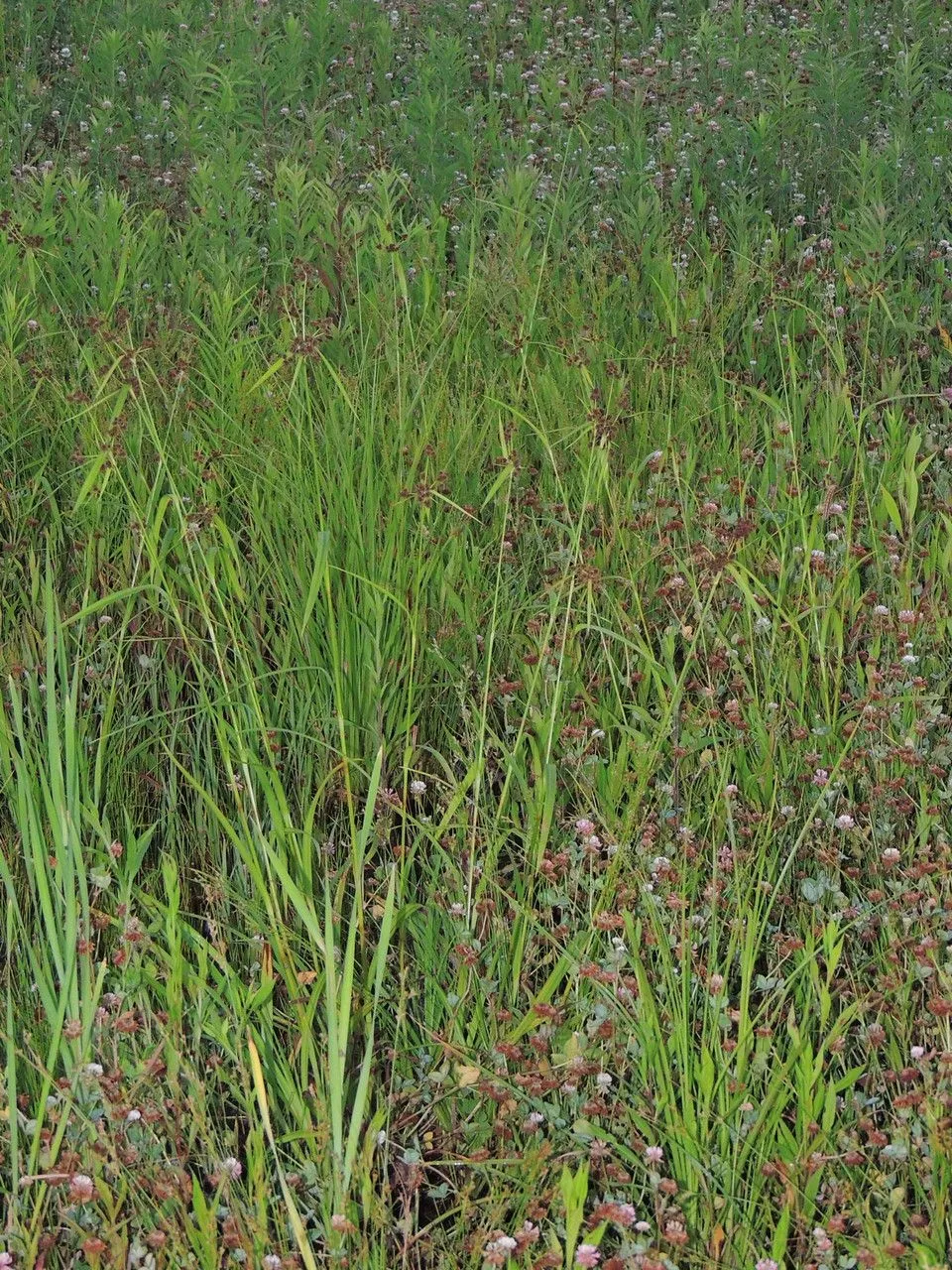
Author: Willd.
Bibliography: Enum. Pl.: 79 (1809)
Year: 1809
Status: accepted
Rank: species
Genus: Scirpus
Vegetable: False
Observations: Canada to U.S.A.
Black bulrush, scientifically known as Scirpus atrovirens, is a distinguished member of the Cyperaceae family. First documented in the compendium “Enum. Pl.” in 1809 by the botanist Willdenow, this perennial plant is esteemed for its contribution to wetland ecosystems.
Found extensively from Canada to various regions in the United States, Black bulrush thrives in moist environments. It typically inhabits wetlands, marshes, and the edges of water bodies, where it plays a crucial role in stabilizing the soil and providing habitat for wildlife.
The plant is characterized by its robust, dark green stems that can reach impressive heights, and its dense, cylindrical clusters of flowers which bloom throughout the growing season. These features not only make it a vital component of its natural habitat but also an attractive option for natural landscaping and ecological restoration projects.
Whether serving as a natural water filter, a haven for aquatic life, or a striking addition to a wetland garden, Black bulrush exemplifies the intricate beauty and functionality within the plant kingdom.
Eng: black bulrush, green bulrush, dark green bulrush, dark-green bulrush, wool bulrush
Deu: dunkelgrüne simse, schwarzgrüne simse
Hun: sötétzöld erdeikáka*
Fra: scirpe noirâtre, scirpe vert sombre
En: Black bulrush, Green bulrush, Dark-Green Bulrush, Wool bulrush, Dark green bulrush
Nl: Donkergroene Bies
Fr: Scirpe noirâtre, Scirpe vert sombre, Souchet vert sombre
De: Dunkelgrüne Simse, Schwarzgrüne Simse
Hu: Sötétzöld erdeikáka*
It: Lisca d’America
Taken Jun 29, 2015 by EOL − camelcreek (cc-by-nc)
Taken Jun 18, 2010 by Tela Botanica − Jean Claude Estatico (cc-by-sa)
Taken Aug 6, 2020 by wiseman simon (cc-by-sa)
Taken Jan 10, 2020 by Michael (cc-by-sa)
Taken Sep 21, 2008 by Lugifa Lugifa (cc-by-sa)
Taken Jan 10, 2020 by Michael (cc-by-sa)
Taken Jun 26, 2021 by Natures Fairy (cc-by-sa)
Taken Jul 1, 2021 by Evarose (cc-by-sa)
Taken Jul 7, 2021 by Pascal Guerin (cc-by-sa)
Taken Sep 10, 2020 by Marianne Morency-Landry (cc-by-sa)
Taken Jan 1, 1900 by EOL − John Hilty (cc-by-nc)
Taken Apr 10, 2008 by EOL − Chicago Botanic Garden 2007 (cc-by-nc-sa)
Taken Jan 1, 1900 by EOL − This image is not copyrighted and may be freely used for any purpose. Please credit the artist, original publication if applicable, and the USDA-NRCS PLANTS Database. The following format is suggested and will be appreciated: Jennifer Anderson @ USDA-NRCS PLANTS Database If you cite (public)
Taken Jan 1, 1900 by EOL − This image is not copyrighted and may be freely used for any purpose. Please credit the artist, original publication if applicable, and the USDA-NRCS PLANTS Database. The following format is suggested and will be appreciated: Jennifer Anderson @ USDA-NRCS PLANTS Database If you cite (public)
Taken Jun 16, 2015 by EOL − Robert L Curtis (cc-by-nc-sa)
Taken Jun 16, 2015 by EOL − Robert L Curtis (cc-by-nc-sa)
Taken Jun 29, 2015 by EOL − camelcreek (cc-by-nc)
Taken Jun 23, 2015 by EOL − Alex Palmer (cc-by-nc)
Taken Jun 23, 2015 by EOL − Alex Palmer (cc-by-nc)
Taken Jun 23, 2015 by EOL − Alex Palmer (cc-by-nc)
Taken Jun 23, 2022 by PT (cc-by-sa)
Taken Oct 21, 2013 by Tela Botanica − Hugues TINGUY (cc-by-sa)
© copyright of the Board of Trustees of the Royal Botanic Gardens, Kew.
Growth form>: Bunch
Growth habit>: Graminoid
Growth rate>: Moderate
Ph maximum: 8.0
Ph minimum: 4.0
Light: 8
Atmospheric humidity: 8
Soil nutriments: 5
Family: Myrtaceae Author: (F.Muell.) K.D.Hill & L.A.S.Johnson Bibliography: Telopea 6: 402 (1995) Year: 1995 Status:…
Family: Rubiaceae Author: Pierre ex A.Froehner Bibliography: Notizbl. Bot. Gart. Berlin-Dahlem 1: 237 (1897) Year:…
Family: Sapindaceae Author: Koidz. Bibliography: J. Coll. Sci. Imp. Univ. Tokyo 32(1): 38 (1911) Year:…
Family: Asteraceae Author: A.Gray Bibliography: Pacif. Railr. Rep.: 107 (1857) Year: 1857 Status: accepted Rank:…
Family: Fabaceae Author: Medik. Bibliography: Vorles. Churpfälz. Phys.-Ökon. Ges. 2: 398 (1787) Year: 1787 Status:…
Family: Aspleniaceae Author: (Cav.) Alston Bibliography: Bull. Misc. Inform. Kew 1932: 309 (1932) Year: 1932…